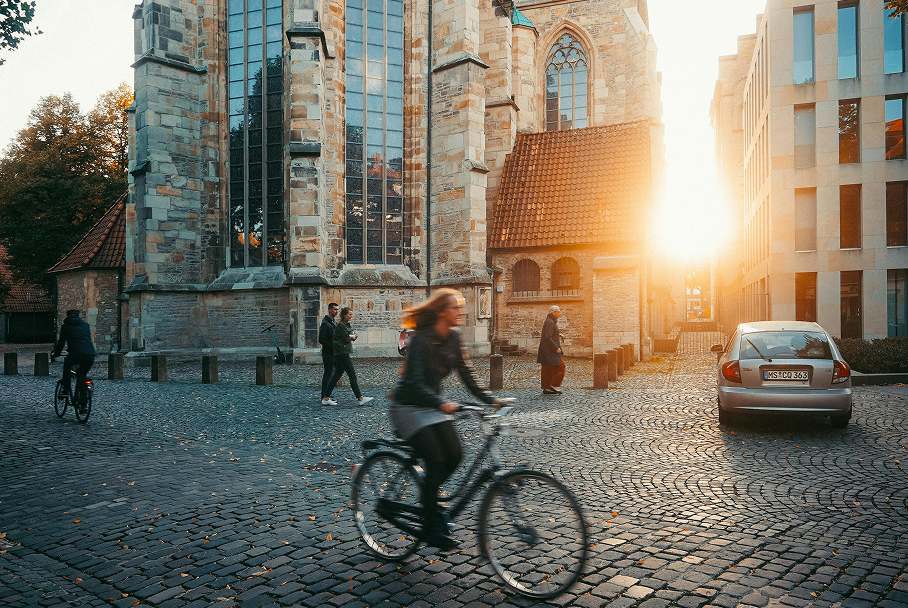Index
Receive our newsletter
Strolling among historic buildings, having the Central Market just a few steps away, and the chance to enjoy a city that never stops. In Valencia, almost everything is concentrated within a few streets: heritage, leisure, shops, squares, and terraces. At the same time, you also have to deal with noise, restricted traffic, and steadily rising rental prices. This guide covers the essentials to help you decide whether the heart of the city is the right fit for you.
Which areas make up the “center”
When talking about the center, we mean Ciutat Vella, which includes neighborhoods such as La Seu, La Xerea, El Carmen, El Mercat, and Sant Francesc. Nearby parts of the Eixample, like Pla del Remei, Gran Vía, and Ruzafa, also fall into this category.
These areas are full of activity, well connected by metro (Colón, Xàtiva, Àngel Guimerà) and bus, and everything is only a short walk away. For slightly longer journeys, cycling is very popular thanks to well-connected bike lanes and the public rental service.
Advantages of living in the center
- Convenient location: museums, shops, universities, offices, and restaurants are all within walking distance.
- Historic surroundings: centuries-old streets, iconic squares, and traditional markets that preserve the local essence.
- Constant culture and leisure: from the Silk Exchange to the IVAM, plus concert halls, theaters, and a rich culinary scene.
- Easy social life: plenty of meeting points, from cafés to terraces, making it easier to stay active and connected.
- Everyday services: pharmacies, supermarkets, and markets like the Central Market or Mercado de Colón are always nearby.
Drawbacks to consider
- Higher rents: prices are noticeably above the city’s average.
- Noise and crowds: especially in El Carmen, with its nightlife and steady flow of visitors.
- Traffic restrictions: Ciutat Vella has a Residential Priority Area (APR), and the Low Emission Zone (ZBE) limits vehicle access depending on its environmental rating.
- Older buildings: many lack elevators, have limited natural light, or outdated facilities.
- High competition: renovated apartments are rented quickly, and demand is strong year-round.
Rental prices in the center
As of July 2025, the average rent in Valencia is €13.5/m², while in Ciutat Vella it rises to €18.9/m².
In practice, this means:
- Studio (40 m²): about €750/month
- One-bedroom (50 m²): around €940/month
- Two-bedroom (70 m²): roughly €1,320/month
- Three-bedroom (90 m²): about €1,700/month
Flat sharing is common, with rooms usually costing between €400 and €415/month.
Differences between neighborhoods
Each part of the center has its own character:
- La Seu and La Xerea: quieter, close to the Turia river, with stately buildings. Prices are usually high.
- El Carmen: alternative vibe, street art, bars, and nightlife. Noise is part of the package.
- El Mercat and Sant Francesc: very central, practical for walking everywhere, and well connected by public transport.
- Pla del Remei and Gran Vía: large apartments in elegant Eixample buildings, among the most expensive areas in Valencia.
- Ruzafa: trendy and full of cafés, restaurants, and galleries. Extremely high demand and rising rental prices.
Transport and mobility
Walking or cycling is the easiest way to move around the center. Driving, on the other hand, is more complicated: the APR restricts vehicle access to Ciutat Vella, and the ZBE adds further limitations. Parking is scarce, although residents do have regulated areas.
Public transport is reliable, with several metro lines connecting the center to the rest of the city and bus routes covering the main points.
Cost of living beyond rent
Everyday expenses in the center are relatively affordable compared to other Spanish cities of similar size. A monthly public transport pass costs about €32, and groceries in local markets or supermarkets are reasonably priced. Eating out is also manageable, with daily menus usually between €12 and €15, and a wide variety of bars and restaurants to choose from.
Central Valencia combines history, energy, and convenience, though at the cost of higher rents and more noise. It’s an area full of character, perfect for those who value proximity and prefer not to rely on a car. For anyone prioritizing peace, more spacious homes, and lower costs, surrounding neighborhoods may be a better choice.









